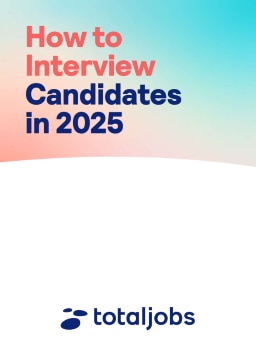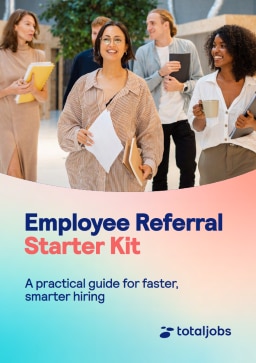
Candidate filtering: A guide for employers
Table of Contents
- Importance of filtering candidates
- How to filter candidates
- Find the best candidates

How to Interview Candidates

Employee Referral Kit
When hiring for open roles, there are two key factors to consider. Quality of hire, and the speed with which you can fill the role. There’s a balance to strike here, as if you work too quickly to secure talent for the role, you might choose the wrong candidate. If you move too slowly, on the other hand, you might lose out on the best talent. That’s where candidate filtering comes in. Once you’ve attracted a pool of candidates to choose from, you can filter out unqualified candidates and invest more time and energy on the best prospects. In this article, we’ll examine some top techniques for candidate filtering you can implement in your next round of hiring.
Importance of filtering candidates
Once you’ve posted a job advert and receive an influx of applications, candidate filtering becomes crucial for many reasons. This includes:
- The job market is often flooded with applicants, with many job seekers applying for roles that they aren’t qualified for. This means you need a filtering process to manage the sheer volume of applications you get.
- Interviewing is a process that costs both time and money, so it’s vital to make sure you’re only investing time in candidates who have a real shot at succeeding in the role.
- Filtering gives your recruitment process consistency, with all applicants evaluated against the same criteria, thereby helping to reduce bias.
- By targeting your approach and filtering applicants carefully, you can find a pool of applicants who have the potential to be the right fit for your organisation.
- Having a filtering stage gives you a good chance of improving your quality of hire, which means hiring staff who settle in and become productive more quickly while sticking it out for the long term.
Filtering can also provide useful data on your applicant pool, which will help you refine your recruitment process over time. With the right insights, you can iterate on your job ads to attract higher-quality candidates in the future.
How to filter candidates
There are several steps you can include in your candidate filtering process. Here are our top five suggestions.
1. Define job requirements clearly
Knowing how to write an effective job description will help you immensely. By giving job seekers clarity and exact requirements in the advert, you’ll be giving them all the information they need to decide whether they could succeed in the role. Think carefully about how you want to present the information. Follow these basic tips to help you:
- Have a ‘must-haves’ or ‘essential requirements’ section that details the skills and experience a candidate has to have to be considered for the role.
- Then you can add a ‘nice-to-haves’ or ‘desired requirements’ section, where you list the skills and experience that will help an applicant to be successful, without discounting those from different backgrounds who could bring diverse perspectives to the role.
- Use clear concise language throughout.
- Include information on your culture and values so that people who might be a good cultural fit can be sure to apply.
- Be transparent about pay and employee benefits if you can. A key part of job ads is allowing applicants to self-screen themselves out if your offer doesn’t align with their expectations.

Reading tip
How to write an effective job description: Best practices
2. Screen CVs and cover letters efficiently
Part of being a good recruiter or hiring manager is being able to do the manual work of screening quickly and effectively. Below are some of the methods you can use to help you to screen efficiently:
- Focus on skills and experience. You should be able to determine quickly whether an applicant fits the essential requirements for the role. If they do, put them on a pile for further reading. If they don’t, they can go in the ‘no’ pile.
- Ignore names and other demographic information. This is key for preventing unconscious bias from creeping in.
- Aim to ignore educational background if not strictly relevant, as many talented candidates could come from a diverse array of educational backgrounds.
- Check that their experience is realistic. Unfortunately, people lie on CVs, and this can have serious consequences down the line. Look out for exaggerated claims or inconsistencies in their work history and keep a note of anything that seems unlikely so you can ask questions during the interview stage.
- Keep an eye out for red flags. For example, long gaps in employment that don’t have any reasonable explanation, or frequent job hopping, which could suggest a candidate is incapable of holding down a job.
- Review for spelling or grammatical errors. While these might not be a deal-breaker for many recruiters, frequent typos or errors might show a lack of professionalism and attention to detail. This is especially relevant for any role requiring good communication skills.
3. Implement pre-employment assessments
A surefire way to screen out a good proportion of unsuitable candidates from the get-go is to use automated assessment questions at the application stage. There are applicant tracking systems (ATS) that can help you with this. These use artificial intelligence (AI) to automate parts of the recruitment process. While many ATSs are popular with recruiters because they can help to track applications from start to finish, they can also be used at the initial application stage to screen candidates. You can programme them to ask candidates some basic screening questions to make sure they have the essential requirements before submitting their application. Questions could include:
- If they have the legal right to live and work in the UK.
- If they have enough years of experience in the industry.
- If they have proficiency with specific equipment, software or processes required for the role.
- If they are willing to undergo any required background checks.
By implementing these screening questions, you can quickly weed out any applicant who doesn’t meet the most basic requirements of the role.

Reading tip
AI in Recruitment: How it works
4. Conduct phone screening interviews
You can add another stage to the screening process in the form of phone interviews. These are short introductory interviews that don’t take up as much time as a traditional face-to-face or video interview. They give you a chance to ask a candidate about the information they’ve provided in their application materials and to find out a bit more about their motivation for applying and whether they will be a good cultural fit. By keeping these calls to 10 to 20 minutes max, you can get a clearer picture of your pool of candidates and choose only the ones that best fit your requirements for more in-depth, time-consuming interview stages.

Check out our comprehensive guide to conducting interviews for insights into how a structured process can help you identify and onboard talent with the skills you need..
5. Use employee referrals
There is another step you can add to your recruitment process that filters the quality of applicants for you – using an employee referral scheme. This involves offering current employees an incentive to refer suitable candidates from their networks for open roles. If you hire the referred candidate, the employee who referred them would then get the incentive, which is usually in the form of a cash bonus. While referred candidates will still need to be evaluated like any other, this method does streamline applications to some extent, as your current employees are incentivised to put forward candidates who fit the requirements of the role.

Employee referral starter kit
Your free referral programme framework to boost hiring quality and speed
Find the best candidates for your open roles
By utilising the techniques outlined in this article, you can create a strong shortlist of candidates to interview in the later stages of the hiring process. Remember to mix and match the methods as required for the needs of your organisation and you’ll likely see an improvement in the quality of your hires, as well as having the added benefit of a bigger pool of potential candidates for future roles.
Receive the latest recruitment resources and
advice to boost your hiring
By providing us with your details you agree to our privacy policy and for us to keep you updated with the latest news, events,
and special offers from Totaljobs.






